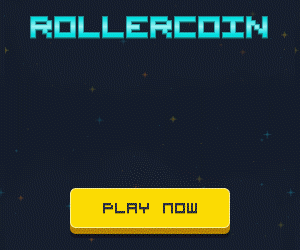For many newbies in the cryptocurrency world, Bitcoin Ordinals and Ethereum NFTs may sound similar. However, they both operate in distinct ways and have some significant differences. This article will discuss what Bitcoin Ordinals are and explore how they differ from Ethereum NFTs.
What Are Bitcoin Ordinals?
For years since its inception, Bitcoin lagged in the realm of NFTs due to its original purpose as a digital payment system. It lacked the necessary functionalities for unique, non-fungible digital assets. Ethereum and Solana gained fame as platforms for artistic expression and memes through their ERC-721 and SPL token standards.
Conceptualized by Casey Rodarmor, co-host of Bitcoin BitDevs, the Ordinal Theory emerged as a solution to this problem in January 2023. It introduced the concept of inscriptions, which are sequential numbers assigned to each satoshi, the smallest Bitcoin denomination. These Bitcoin Ordinal inscriptions could take the form of not just numbers but also images, GIFs, or short videos. Thus, it turns each satoshi into a unique entity.
This innovative approach helped to revolutionize Bitcoin’s involvement in the NFT space and saw the birth of Bitcoin Ordinals.
How Do Bitcoin Ordinals Work?
Bitcoin Ordinals are essential markers in the Bitcoin blockchain used to order and timestamp transactions. Each block in the Bitcoin blockchain receives a unique ordinal number based on its position within the chain.
This numbering system commences at 0 for the Genesis Block, the first block ever mined, and increases sequentially with each subsequent block added to the chain. These ordinals play a vital role in maintaining the chronological history and immutability of transactions on the Bitcoin network, ensuring that the order of transactions is universally agreed upon.
Bitcoin ordinals can be integrated to create a timestamped record of ownership and provenance. When an ordinal is created, its unique identifier, often represented as a cryptographic hash, can be associated with a specific Bitcoin block height. This association links the NFT to a point in the Bitcoin blockchain’s history, providing a verifiable and immutable record of when the NFT was minted or transferred. This timestamped connection to Bitcoin ordinals enhances the trustworthiness and transparency of NFT ownership and history, as it leverages the security and decentralization of the Bitcoin network to safeguard the integrity of NFT-related data.
In this way, Bitcoin ordinals not only facilitate the ordering of Bitcoin transactions but also offer a valuable tool for NFT creators and collectors seeking to establish the authenticity and provenance of their digital assets.
Characteristics of Bitcoin NFT Ordinals
Let’s have a look at some of the unique characteristics of Bitcoin Ordinals:
- Combination of Data and Satoshi: Bitcoin Ordinals combine data and satoshis in a process known as “inscription.” This doesn’t really require the use of a sidechain or an additional token, which makes it simple to create the NFT on Bitcoin.
- No Smart Contracts: Bitcoin Ordinals, unlike many other NFT platforms, do not rely on smart contracts for their functionality. They employ an ordering system called ordinal theory to assign each satoshi a unique number based on the order in which they were mined, with the first ordinal number dating back to 2008.
- No Additional Layers: Bitcoin Ordinals maintain backward compatibility with the existing Bitcoin network, meaning they don’t require additional network layers or complex infrastructure changes.
- Inscriptions as NFT Content: The “inscriptions” are the specific data that make up the NFT itself. Remember that these inscriptions don’t have a separate space for metadata. Rather, they are stored within the witness data of a Bitcoin transaction.
- Creating an Ordinal NFT: You must send a single satoshi transaction to a wallet to generate an Ordinal NFT. Also, it includes the metadata as part of the process. The important thing in the process is not using satoshi as the network fee. Some new tools have made it more accessible by automating this process.
What Are NFTs on Ethereum?
Non-fungible tokens (NFTs) on Ethereum are digital tokens primarily built on the Ethereum blockchain, representing unique assets. You can find them in digital or tokenized versions of real-world items. Each NFT is distinct, with its identifying information stored in smart contracts. This provides proof of authenticity or ownership in the digital realm.
NFTs have several characteristics that differentiate them from fungible assets. They are non-interoperable, which means one NFT cannot replace another due to their unique identities.
Data related to NFTs is stored on the blockchain, allowing easy tracking of ownership. NFT data is indestructible, as it cannot be replicated or destroyed, and ownership is immutable, ensuring users genuinely own their assets. This is in contrast to, for example, purchasing music, where ownership may be less clear.
What Are the Characteristics of NFTs on Ethereum?
Here are some of the main characteristics of NFTs on Ethereum:
- Smart Contracts: NFTs on Ethereum are based on smart contracts, which contain essential information like ID, metadata (including name, image, video, or other content), owner details, and transaction history. These smart contracts govern the behavior and attributes of the NFT.
- ERC Standards: NFTs on Ethereum are most commonly associated with the ERC-721 and ERC-1155 standards. These are application programming interfaces (APIs) that enable the creation, transfer, and storage of NFTs within Ethereum wallets. ERC-721 is primarily used for unique resources, while ERC-1155 can handle both unique and repetitive resources.
- IPFS Integration: Ethereum NFTs often make use of the InterPlanetary File System (IPFS) to store metadata in a decentralized and secure manner. IPFS provides a dedicated digital space for storing NFT information.
- Gas Fees: Creating, transferring, and storing NFTs on the Ethereum blockchain involves the payment of “gas fees.” These are transaction fees paid in Ether, Ethereum’s native cryptocurrency, and are essential for processing NFT-related actions on the network.
How Do Bitcoin Ordinals Differ From NFTs on Ethereum?
Most NFTs rely on smart contracts for their creation and tracking, with the assets or data often hosted off-chain, sometimes on decentralized storage systems like IPFS. But Ordinals are directly inscribed onto satoshis and stored on the Bitcoin blockchain.
Here are more significant differences between Bitcoin Ordinals and NFTs on Ethereum.
- Storage: Ordinals are validated in blocks and other Bitcoin transactions, with their data stored on-chain. Traditional Ethereum NFTs, where the metadata can be hosted externally and updated to change the appearance or characteristics of an NFT.
- Immutable Inscriptions: Once an ordinal is inscribed, it cannot be changed. However, Ethereum NFTs often allow creators and holders to update metadata, such as by using higher-resolution images.
- Royalties: Traditional Ethereum NFTs often provide creators with the ability to receive royalties on subsequent sales. But this feature is not available with Ordinals.
- Trading: Trading Bitcoin Ordinals is more complex because Bitcoin lacks built-in smart contract functionality. Thus, there are no decentralized exchanges or user-friendly wallets for trading Bitcoin Ordinals. Users alternatively rely on over-the-counter (OTC) or peer-to-peer trades.
- Loss Potential: Both Ordinals and Ethereum NFTs can be lost but in slightly different ways. NFTs can be lost if users lose access to their wallets. Conversely, Bitcoin Ordinals that are inscribed on Satoshis can be accidentally spent, and the miner validating that transaction could gain custody of the ordinal, knowingly or unknowingly.
Final Verdict
Bitcoin Ordinals are like permanent digital markers on the Bitcoin network, while Ethereum NFTs are more flexible and can change if needed. These differences create unique opportunities and challenges for crypto enthusiasts.
As technology is always getting more advanced, understanding the differences in digital assets will help you navigate the world of digital ownership properly. You can choose your right NFTs from Bitcoin Ordinals and Ethereum NFTs.
Follow us on our social networks and keep up to date with everything that happens in the Metaverse!
Twitter Linkedin Facebook Telegram Instagram Google News Amazon Store












































